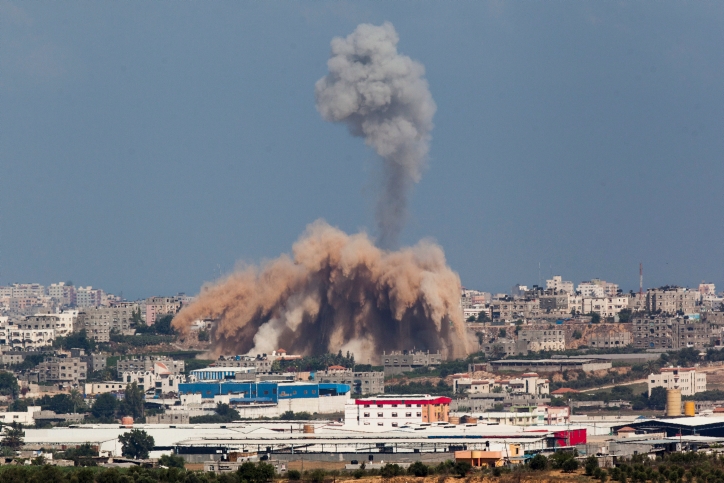Palestinian deaths vs. Israeli deaths
Published July 15, 2014

Smoke and debris rise from a site in Gaza after an Israeli airstrike, July 9, 2014. (Yonatan Sindel/Flash90)
In my roundup of 8 things you need to know about the Gaza-Israel conflict, I forgot to include one important point: the Palestinian death toll.
The number of Palestinian deaths to Israeli deaths is clearly disproportionate — as of this writing, about 192:1. There are a few different ways to look at this rate.
Critics of Israel herald the lopsided figure as evidence of Israeli barbarism. But such a simplistic view misses several important points. One, the Israeli death toll is low because Iron Dome, Israel’s missile defense system, is successfully intercepting incoming rockets. The Palestinians have no defense against Israeli missiles.
Second, the ratio would be more lopsided if Israel were trying to kill Palestinian civilians. But by most accounts it’s trying not to do that. This is the most important element in interpreting the death toll: While Hamas measures its success by how many Israelis it is able to kill, Israel measures its success in part by how few Palestinian civilians it kills.
So how is Israel doing compared to previous Israel-Hamas battles? The Palestinian death toll is much lower than it was in 2008-’09, when a ground invasion preceded by an air campaign resulted in some 1,150 Palestinian deaths over three weeks. But the Palestinian casualty count now isn’t too different from November 2012, when an eight-day air campaign resulted in an estimated 158-177 Palestinian deaths.
The Israeli death rate, meanwhile, is down significantly — from 13 in 2008-’09 and six in 2012 to one so far in nine days of fighting.
![]()















